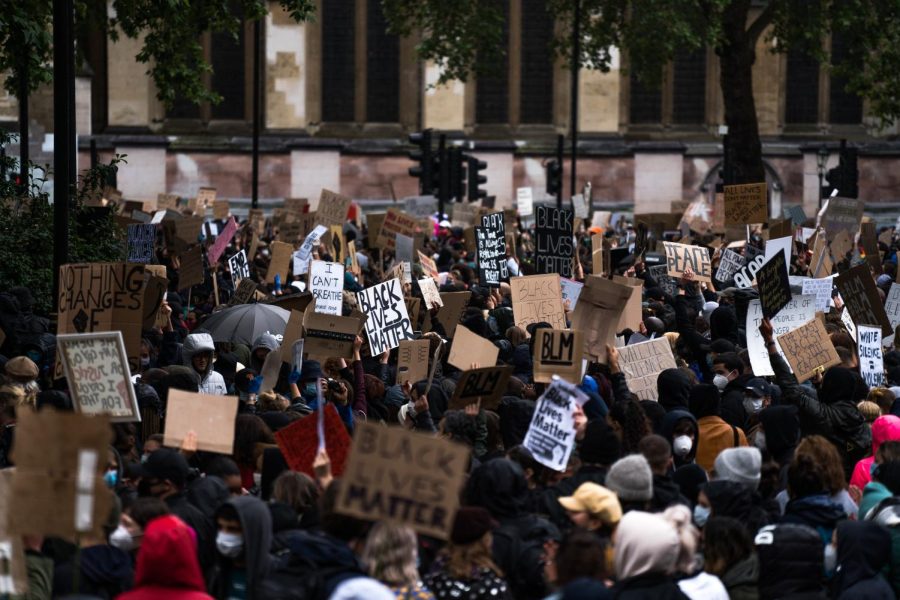Increase in racial disparities since BLM movement
UNSPLASH PHOTO COURTESY OF James Eades
Since the Black Lives Matter movement, there has been an increase in racial disparities. https://unsplash.com/license
June 16, 2022
The year was 2020, and people worldwide were marching, protesting, and advocating to end police brutality amongst Black people. The Black Lives Matter (BLM) movement was at its peak after the tragic death of George Floyd, exemplifying racial disparity in America. In the year 2022, the question arises of how far has the BLM movement come.
The death of George Floyd marked a breaking point, sparking the largest racial justice protests in the U.S. since the Civil Rights Movement, according to CBS News. Polls suggest that 15 to 26 million people in the U.S. participated in the demonstrations, which does not even account for the protests that occurred worldwide, according to the New York Times.
Sophomore Molly Deming of Red Bank remembers attending a BLM protest in 2020. “It was a very emotional experience,” said Deming. “We had eight minutes and 30 seconds of silence for George Floyd to show how long that really is to lean your knee on someone’s neck.”
In response to the protests, some states took immediate action. About 30 states made changes to police tactics, involving neck restraints and duty to intervene, as reported by Brookings.edu. The House of Representatives passed the George Floyd Justice in Policing Act, which planned to provide de-escalation training, mandate body-worn cameras, ban chokeholds and no-knock warrants, as well as provide mental health training for officers among other similar reforms, according to The New York Times. Nevertheless, growing research shows that these reforms have not managed to curb police violence as intended, as reported by The Guardian.
None of the aforementioned reforms were able to stop the killings of Eric Garner, Charleena Lyles, Ryan Twyman and countless others from losing their lives to police brutality. According to NBC News, Black people, who make up 13 percent of the U.S. population, accounted for 27 percent of those shot and killed by the police in 2021. Despite the protests and reforms of 2020, Black people are still twice as likely to be shot and killed by police officers than white people.
“I don’t think there’s been much change with police reforms since the protests,” Deming said. “Overall, racial disparity is still a very prevalent issue and something that needs to be taken more seriously.”




